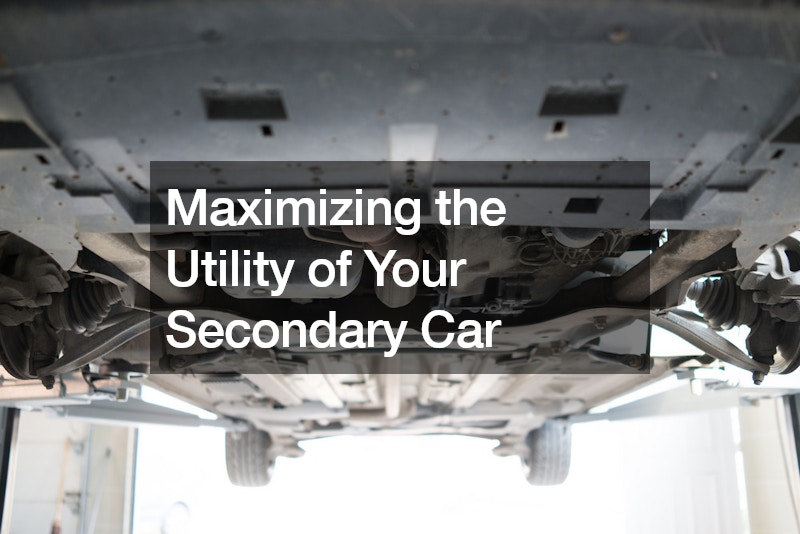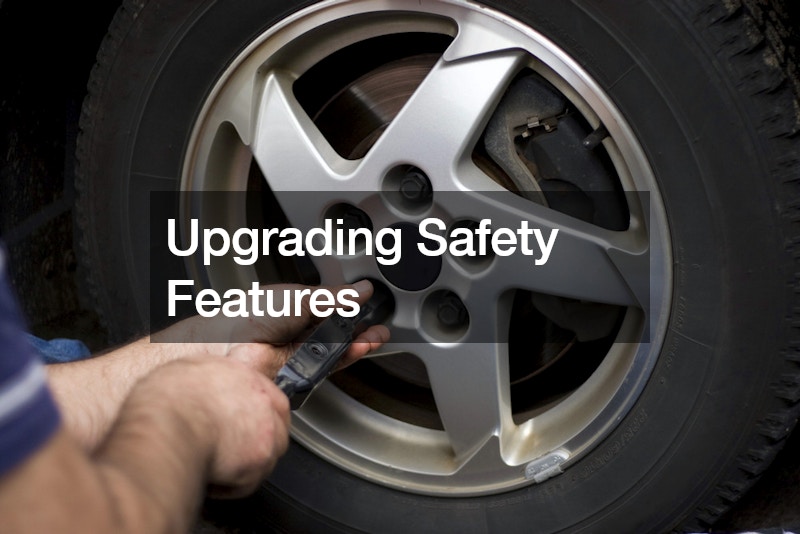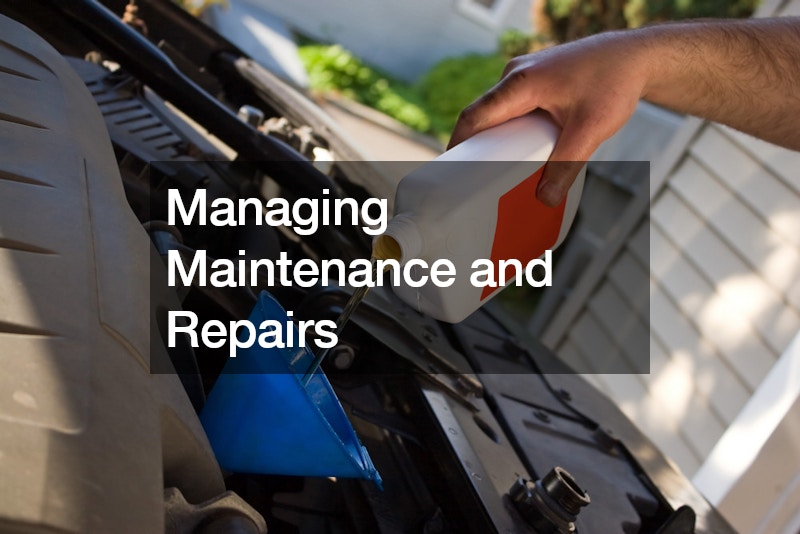Understanding Car Maintenance
Transitioning a secondary car into your primary vehicle can be a practical and cost-effective decision. Whether it’s to save money, make use of an underutilized asset, or because your primary vehicle is no longer viable, there are numerous advantages to making this switch. However, this process involves more than simply deciding to drive the secondary car more often. It requires careful planning and thoughtful adjustments to ensure the second car can meet your daily needs reliably and comfortably. From evaluating the car’s current condition to optimizing it for regular use, each step is crucial in making this transition smooth and successful.

Maximizing the Utility of Your Secondary Car
Turning your secondary car into your primary vehicle starts with maximizing its utility. This involves making sure the car can handle the increased usage and demands of daily driving. You need to evaluate its current features and consider any upgrades that might be necessary. Think about what you typically rely on your primary vehicle for and ensure your secondary car is equipped to meet those same needs. For example, if your primary car has a high-end sound system or advanced navigation, consider adding similar features to your secondary car. Enhancing its utility will make the transition seamless and more enjoyable.
One way to significantly boost the utility of your secondary car is by paying attention to its aesthetics and cleanliness. Regular detailing can keep your car looking fresh and new, enhancing your driving experience. Car detailing businesses offer services that can make your secondary car feel like a brand-new ride. A well-maintained, clean car not only feels better to drive but also functions better by preventing wear and tear from dirt and grime. Investing in professional detailing periodically can maintain your car’s appearance and longevity, making it a reliable primary vehicle.
Assessing Your Secondary Car’s Condition
Before making the switch, it’s crucial to thoroughly assess the condition of your second car. This involves a comprehensive evaluation of its mechanical and structural integrity. Start with the basics, such as checking the tires, brakes, and battery. Look for any signs of wear and tear that could affect its performance. If your secondary car has been sitting idle for a while, you might need to replace certain parts or fluids to ensure it runs smoothly. Additionally, consider taking it for a professional inspection to uncover any hidden issues that could become problematic with increased use.
In-depth assessments might reveal the need for specific repairs or upgrades. For instance, if your secondary car requires attention to its engine or transmission, consulting an auto repair specialist is essential. Professional mechanics can diagnose and fix potential problems that might not be evident during a casual inspection. Regular maintenance and prompt repairs ensure that your second car remains reliable and safe for everyday use. Making these assessments and addressing any issues early can save you from unexpected breakdowns and costly repairs in the future, allowing you to depend on your secondary car as your primary mode of transportation.

Evaluating the Costs of Transitioning
Transitioning your secondary car into your primary vehicle requires a clear understanding of the associated costs. It’s important to consider both the immediate expenses and the long-term financial implications. Immediate costs might include necessary repairs, upgrades, and any accessories to make the car more suitable for daily use. Long-term costs could involve increased fuel consumption, regular maintenance, and potential depreciation. By evaluating these factors upfront, you can make an informed decision about whether converting your secondary car is a financially sound choice.
One significant aspect to consider is the change in insurance costs. Auto insurance rates can vary significantly depending on how often you drive the car and what it’s used for. When you switch your secondary car to being your primary vehicle, your insurance premium will likely increase. It’s crucial to communicate with your insurance provider about this change to ensure you have adequate coverage. They can help you understand the potential cost difference and offer options to keep your insurance affordable while still providing the necessary protection for your new primary vehicle.
Enhancing Comfort and Convenience
Comfort and convenience are key factors in making your secondary car a viable primary vehicle. Your car needs to be comfortable for long drives and equipped with conveniences that make your daily commute or errands enjoyable. This might involve upgrading the seating, improving the climate control system, or installing better audio and navigation systems. Prioritizing comfort and convenience ensures that your transition to using the secondary car daily does not compromise your driving experience.
One specific way to enhance your car’s interior is by using custom metal stencils. These stencils can be used to personalize various parts of your car’s interior, adding a unique touch that makes the vehicle feel more like your own. From customizing the dashboard to adding decorative elements to the seats, custom metal stencils can transform the interior look and feel of your secondary car. This personalized touch not only boosts comfort but also makes driving more enjoyable, ensuring that your secondary car meets your standards as a primary vehicle.

Upgrading Safety Features
When transitioning a secondary car into your primary vehicle, upgrading safety features should be a top priority. Safety is paramount, especially if the car will be used for daily commuting or transporting family members. Ensure that your secondary car has up-to-date safety features such as airbags, anti-lock brakes, and electronic stability control. If these features are lacking or outdated, consider investing in modern safety upgrades. Additionally, routine checks on lights, wipers, and tires are essential to maintain safety standards.
Taking defensive driving courses online can also significantly enhance your safety on the road. These courses can provide valuable tips and strategies to avoid accidents and handle unexpected situations effectively. By improving your driving skills, you can better navigate daily traffic and reduce the risk of accidents. Incorporating these safety measures will not only protect you and your passengers but also give you peace of mind, knowing that your secondary car is equipped to handle the demands of being your primary vehicle.
Updating your car’s safety features significantly enhances your protection on the road, reduces the risk of accidents, and can lower insurance premiums. Modern safety upgrades provide peace of mind, ensuring that your vehicle is equipped to handle daily driving demands safely.
Optimizing Fuel Efficiency
One of the key considerations when converting your secondary car into your primary vehicle is its fuel efficiency. Given the rise in fuel prices and the potential increase in your driving mileage, optimizing fuel efficiency is both economically and environmentally beneficial. Start by evaluating the current fuel economy of your secondary car and consider implementing simple practices to improve it. Regular maintenance, such as timely oil changes, proper tire inflation, and using the recommended fuel type, can make a significant difference in your car’s fuel efficiency.
For more specific improvements, you might want to consider professional services such as Honda repair if your secondary car is a Honda. Specialists can provide targeted maintenance and upgrades designed to enhance fuel efficiency. For instance, they might suggest tuning the engine or upgrading to more efficient fuel injectors. By ensuring that your secondary car is operating at peak efficiency, you can save money on fuel and reduce your environmental footprint, making it a more sustainable option as your primary vehicle.

Managing Maintenance and Repairs
Regular maintenance and prompt repairs are crucial when your secondary car becomes your primary mode of transportation. Keeping up with routine maintenance such as oil changes, brake checks, and tire rotations ensures that your car remains reliable and safe. Establish a maintenance schedule and stick to it to prevent minor issues from escalating into major problems. Additionally, having a reliable mechanic or service center that you trust can make a big difference in the longevity and performance of your vehicle.
For specific maintenance needs, such as electric repairs, it’s important to consult specialists who can address complex issues effectively. Electrical problems can be particularly challenging and can affect various systems in your car, from lighting to critical engine components. By seeking professional help for electric repairs, you can ensure that these issues are resolved correctly and safely. Regularly addressing both routine and specific maintenance needs will keep your secondary car running smoothly and help it transition into your primary vehicle seamlessly.
Adjusting Insurance and Registration
When your secondary car transitions to being your primary vehicle, adjusting your insurance and registration is a necessary step. Your insurance coverage needs will change as the car’s usage increases, and it’s essential to update your policy to reflect its new status. Contact your insurance provider to discuss how these changes will affect your premium and coverage options. Ensure that your policy covers all potential risks and liabilities associated with daily driving, including comprehensive and collision coverage.
In addition to insurance, you may need to update the car’s registration to reflect its new primary status. For instance, if your secondary car was registered as a seasonal or limited-use vehicle, you will need to change this designation. This might also involve updating your address or ensuring that your registration is in line with local regulations. Additionally, consider any other associated services you might need, such as asphalt driveway repair, to ensure that your vehicle remains in good condition when parked at home. Properly adjusting your insurance and registration will help you avoid legal issues and ensure that you are fully covered as you make the transition.
Organizing Essential Documentation
Properly organizing all essential documentation is a crucial step when transitioning your secondary car into your primary vehicle. This includes having up-to-date insurance papers, registration documents, and any relevant maintenance records readily accessible. Keeping these documents well-organized not only ensures that you can easily find them when needed but also helps in maintaining the car’s value and history. Additionally, it’s wise to keep copies of these documents in both digital and physical formats for added security and convenience.
Specific organizations, such as garage door repair companies, often emphasize the importance of maintaining accurate records of services performed. Adopting a similar approach for your vehicle documentation can be incredibly beneficial. Keeping detailed records of all repairs and services performed on your secondary car will help you stay on top of maintenance schedules and provide a clear history if you ever decide to sell the car. This organized approach to documentation ensures that your car is always ready for inspection or legal requirements, making the transition to a primary vehicle smoother and more efficient.
Planning for Long-Term Reliability
Ensuring the long-term reliability of your secondary car as it becomes your primary vehicle involves both proactive maintenance and strategic planning. Consider the car’s age, mileage, and overall condition to anticipate potential future repairs and replacements. It’s essential to have a long-term maintenance plan that includes regular check-ups and timely replacements of wear-and-tear parts. This approach will help you avoid unexpected breakdowns and ensure that your car remains dependable for daily use.
One specific aspect to consider is the heating system. Regular heating repair and maintenance can prevent significant issues during colder months. Ensuring that your secondary car’s heating system is in good working order is crucial for both comfort and safety. By planning for regular inspections and servicing of the heating system, you can avoid inconvenient and potentially hazardous situations. Investing in the long-term reliability of your secondary car ensures that it can handle the demands of being your primary vehicle for years to come.
Ready To Drive
Transitioning a secondary car into your primary vehicle is a process that requires careful consideration and strategic planning. From maximizing its utility and assessing its condition to evaluating costs and upgrading safety features, each step is vital in ensuring that your secondary car can handle daily use reliably and comfortably. Focusing on comfort, convenience, and long-term reliability will make this transition smoother and more enjoyable. By addressing maintenance, repairs, and documentation, you can transform your secondary car into a dependable primary vehicle. This thoughtful approach not only extends the life of your secondary car but also provides a cost-effective and practical solution to meet your transportation needs.